The Mastectomy Cost in South Korea approximately starts from KRW 26853800 (USD 20000)
The surgical procedure to remove all the breast tissues from a person’s breast partially or completely in order to prevent or treat breast cancer is known as Mastectomy.
Usually, there are two ways to cure breast cancer, the first one is Mastectomy could be one option for treating breast cancer for people who are still in the early stages of it. The second option is Lumpectomy or Breast-Conserving surgery in which only the tumor gets removed instead of removing the complete breast.
Deciding between the two namely mastectomy and lumpectomy is a difficult decision. Because both the methods are almost equally effective in preventing the recurrence of breast cancer. The latest techniques of mastectomy are able to preserve the skin of the breast that enables the appearance of the breast to be more natural after the procedure. This type of mastectomy is also called skin-sparing mastectomy.
The mastectomy could be the treatment option concerning several kinds of breast cancer, such as:
People with the following conditions are the ideal candidate.
Factors affecting the mastectomy cost include:
| Country | Cost | Local_currency |
|---|---|---|
| Greece | USD 12000 | Greece 11040 |
| India | USD 3000 | India 249450 |
| Israel | USD 8500 | Israel 32300 |
| Lebanon | USD 9500 | Lebanon 142552725 |
| Malaysia | USD 8000 | Malaysia 37680 |
| Poland | USD 3050 | Poland 12322 |
| South Korea | USD 20000 | South Korea 26853800 |
| Spain | USD 10220 | Spain 9402 |
| Switzerland | USD 9500 | Switzerland 8170 |
| Thailand | USD 12140 | Thailand 432791 |
| Tunisia | USD 9500 | Tunisia 29545 |
| Turkey | USD 6080 | Turkey 183251 |
| United Arab Emirates | USD 12120 | United Arab Emirates 44480 |
Treatment cost
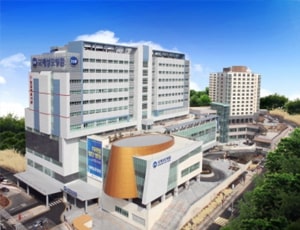
International St. Mary's Hospital located in Seoul, South Korea is accredited by JCI. Also listed below are some of the most prominent infrastructural details:

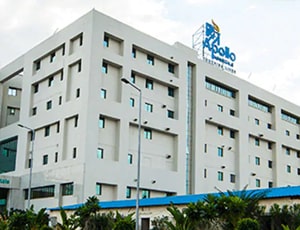
Types of Mastectomy in Apollo Hospital and its associated cost
| Treatment Option | Approximate Cost Range (USD) | Approximate Cost Range (INR) |
|---|---|---|
| Mastectomy (Overall) | 3418 - 8457 | 279091 - 687960 |
| Total Mastectomy | 2814 - 6887 | 231696 - 545907 |
| Modified Radical Mastectomy | 3350 - 7161 | 278417 - 604483 |
| Radical Mastectomy | 3902 - 7916 | 326034 - 644468 |
| Double Mastectomy | 4438 - 8989 | 372831 - 735047 |
| Skin-Sparing Mastectomy | 3321 - 6894 | 274639 - 561892 |
| Nipple-Sparing Mastectomy | 3864 - 7465 | 315999 - 596123 |
| Subcutaneous Mastectomy | 2805 - 5630 | 231646 - 471379 |
| Prophylactic Mastectomy | 3904 - 7866 | 327961 - 650958 |
DOCTORS IN 13 SPECIALITIES
FACILITIES & AMENITIES
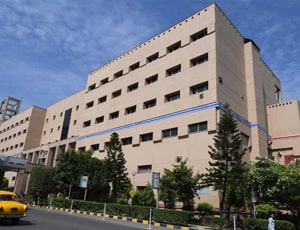
Types of Mastectomy in Apollo Multispecialty Hospitals and its associated cost
| Treatment Option | Approximate Cost Range (USD) | Approximate Cost Range (INR) |
|---|---|---|
| Mastectomy (Overall) | 3370 - 8416 | 282387 - 683408 |
| Total Mastectomy | 2837 - 6742 | 230130 - 544827 |
| Modified Radical Mastectomy | 3445 - 7245 | 271222 - 605365 |
| Radical Mastectomy | 3924 - 8043 | 329450 - 654640 |
| Double Mastectomy | 4513 - 9107 | 364601 - 729578 |
| Skin-Sparing Mastectomy | 3310 - 6647 | 277727 - 545279 |
| Nipple-Sparing Mastectomy | 3924 - 7316 | 317716 - 595646 |
| Subcutaneous Mastectomy | 2862 - 5524 | 226170 - 457310 |
| Prophylactic Mastectomy | 3963 - 7814 | 325489 - 656822 |
DOCTORS IN 13 SPECIALITIES
FACILITIES & AMENITIES
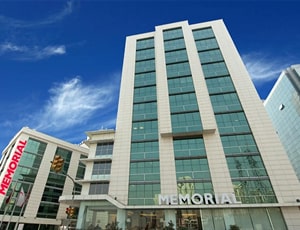
Types of Mastectomy in Memorial Atasehir Hospital and its associated cost
| Treatment Option | Approximate Cost Range (USD) | Approximate Cost Range (TRY) |
|---|---|---|
| Mastectomy (Overall) | 4012 - 9446 | 116722 - 286630 |
| Total Mastectomy | 3367 - 7911 | 101680 - 239794 |
| Modified Radical Mastectomy | 3883 - 8268 | 116967 - 256476 |
| Radical Mastectomy | 4442 - 9174 | 136530 - 271072 |
| Double Mastectomy | 5111 - 10274 | 154387 - 301398 |
| Skin-Sparing Mastectomy | 3942 - 7825 | 118800 - 237301 |
| Nipple-Sparing Mastectomy | 4252 - 8273 | 126939 - 248869 |
| Subcutaneous Mastectomy | 3311 - 6890 | 99620 - 203413 |
| Prophylactic Mastectomy | 4307 - 9048 | 128291 - 274395 |
DOCTORS IN 13 SPECIALITIES
FACILITIES & AMENITIES
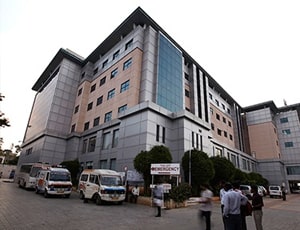
Types of Mastectomy in BGS Gleneagles Global Hospitals and its associated cost
| Treatment Option | Approximate Cost Range (USD) | Approximate Cost Range (INR) |
|---|---|---|
| Mastectomy (Overall) | 3408 - 8522 | 274130 - 687566 |
| Total Mastectomy | 2796 - 6892 | 233033 - 561699 |
| Modified Radical Mastectomy | 3417 - 7316 | 272753 - 587504 |
| Radical Mastectomy | 3963 - 7949 | 316031 - 642983 |
| Double Mastectomy | 4543 - 9124 | 367512 - 743327 |
| Skin-Sparing Mastectomy | 3380 - 6714 | 282253 - 558309 |
| Nipple-Sparing Mastectomy | 4013 - 7351 | 320690 - 587296 |
| Subcutaneous Mastectomy | 2763 - 5626 | 229583 - 453650 |
| Prophylactic Mastectomy | 3917 - 7715 | 319482 - 638502 |
DOCTORS IN 14 SPECIALITIES
FACILITIES & AMENITIES
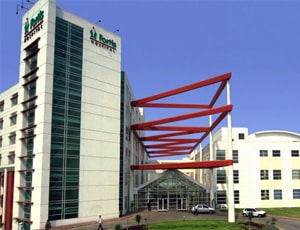
Types of Mastectomy in Fortis Hospital and its associated cost
| Treatment Option | Approximate Cost Range (USD) | Approximate Cost Range (INR) |
|---|---|---|
| Mastectomy (Overall) | 3051 - 7605 | 248630 - 626726 |
| Total Mastectomy | 2536 - 6063 | 208227 - 500786 |
| Modified Radical Mastectomy | 3059 - 6612 | 249700 - 542185 |
| Radical Mastectomy | 3552 - 7135 | 292105 - 581508 |
| Double Mastectomy | 4064 - 8158 | 333444 - 665012 |
| Skin-Sparing Mastectomy | 3053 - 6088 | 249656 - 497104 |
| Nipple-Sparing Mastectomy | 3540 - 6573 | 292682 - 540937 |
| Subcutaneous Mastectomy | 2534 - 5074 | 207980 - 416235 |
| Prophylactic Mastectomy | 3546 - 7093 | 290301 - 584173 |
DOCTORS IN 12 SPECIALITIES
FACILITIES & AMENITIES
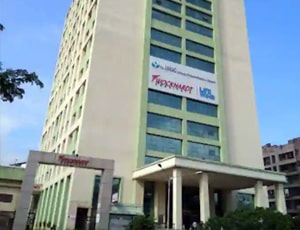
Types of Mastectomy in Wockhardt Hospital, Umrao and its associated cost
| Treatment Option | Approximate Cost Range (USD) | Approximate Cost Range (INR) |
|---|---|---|
| Mastectomy (Overall) | 3054 - 7626 | 250453 - 622737 |
| Total Mastectomy | 2548 - 6102 | 207418 - 500870 |
| Modified Radical Mastectomy | 3047 - 6583 | 249246 - 541324 |
| Radical Mastectomy | 3565 - 7119 | 290237 - 584405 |
| Double Mastectomy | 4068 - 8096 | 332798 - 662911 |
| Skin-Sparing Mastectomy | 3030 - 6092 | 248690 - 500744 |
| Nipple-Sparing Mastectomy | 3544 - 6567 | 291663 - 539974 |
| Subcutaneous Mastectomy | 2525 - 5076 | 208707 - 415973 |
| Prophylactic Mastectomy | 3549 - 7128 | 290498 - 580481 |
DOCTORS IN 13 SPECIALITIES
FACILITIES & AMENITIES
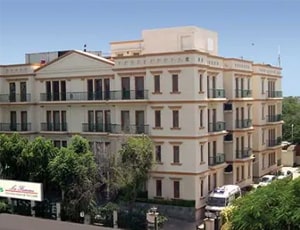
Types of Mastectomy in Fortis La Femme, Greater Kailash II and its associated cost
| Treatment Option | Approximate Cost Range (USD) | Approximate Cost Range (INR) |
|---|---|---|
| Mastectomy (Overall) | 3056 - 7587 | 249677 - 622815 |
| Total Mastectomy | 2536 - 6093 | 208305 - 498659 |
| Modified Radical Mastectomy | 3046 - 6600 | 249799 - 541909 |
| Radical Mastectomy | 3539 - 7107 | 290542 - 585160 |
| Double Mastectomy | 4057 - 8127 | 332665 - 663236 |
| Skin-Sparing Mastectomy | 3037 - 6077 | 250635 - 497304 |
| Nipple-Sparing Mastectomy | 3554 - 6597 | 290674 - 540096 |
| Subcutaneous Mastectomy | 2543 - 5068 | 207972 - 416229 |
| Prophylactic Mastectomy | 3539 - 7115 | 290899 - 581892 |
DOCTORS IN 7 SPECIALITIES
FACILITIES & AMENITIES
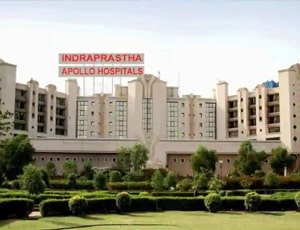
Types of Mastectomy in Indraprastha Apollo Hospital and its associated cost
| Treatment Option | Approximate Cost Range (USD) | Approximate Cost Range (INR) |
|---|---|---|
| Mastectomy (Overall) | 3443 - 8277 | 275378 - 705427 |
| Total Mastectomy | 2795 - 6630 | 228939 - 545248 |
| Modified Radical Mastectomy | 3398 - 7460 | 272127 - 612830 |
| Radical Mastectomy | 3953 - 7821 | 321772 - 637379 |
| Double Mastectomy | 4539 - 8864 | 368571 - 741213 |
| Skin-Sparing Mastectomy | 3376 - 6647 | 272774 - 541288 |
| Nipple-Sparing Mastectomy | 3952 - 7204 | 328140 - 605322 |
| Subcutaneous Mastectomy | 2858 - 5529 | 232876 - 458594 |
| Prophylactic Mastectomy | 3965 - 7840 | 323905 - 638570 |
DOCTORS IN 14 SPECIALITIES
FACILITIES & AMENITIES
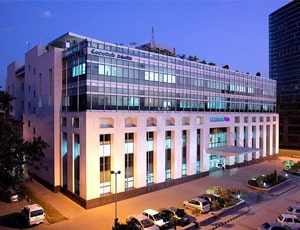
Types of Mastectomy in Manipal Hospital, Yeshwantpur and its associated cost
| Treatment Option | Approximate Cost Range (USD) | Approximate Cost Range (INR) |
|---|---|---|
| Mastectomy (Overall) | 3425 - 8491 | 273379 - 678687 |
| Total Mastectomy | 2872 - 6760 | 228078 - 544541 |
| Modified Radical Mastectomy | 3363 - 7156 | 279568 - 604980 |
| Radical Mastectomy | 3968 - 7920 | 325731 - 636744 |
| Double Mastectomy | 4552 - 9054 | 370736 - 739841 |
| Skin-Sparing Mastectomy | 3396 - 6686 | 279650 - 544461 |
| Nipple-Sparing Mastectomy | 3965 - 7457 | 320263 - 591831 |
| Subcutaneous Mastectomy | 2777 - 5566 | 230988 - 464978 |
| Prophylactic Mastectomy | 3961 - 8010 | 327184 - 635264 |
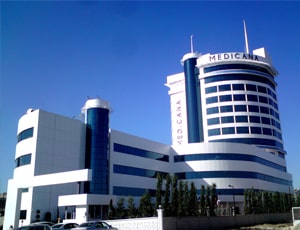
Types of Mastectomy in Medicana Konya Hospital and its associated cost
| Treatment Option | Approximate Cost Range (USD) | Approximate Cost Range (TRY) |
|---|---|---|
| Mastectomy (Overall) | 3875 - 9585 | 120021 - 286170 |
| Total Mastectomy | 3318 - 7739 | 102895 - 236846 |
| Modified Radical Mastectomy | 4007 - 8526 | 119045 - 258872 |
| Radical Mastectomy | 4446 - 8987 | 135240 - 270291 |
| Double Mastectomy | 4994 - 9951 | 151673 - 311796 |
| Skin-Sparing Mastectomy | 3895 - 7729 | 120391 - 235968 |
| Nipple-Sparing Mastectomy | 4209 - 8356 | 126223 - 255552 |
| Subcutaneous Mastectomy | 3403 - 6657 | 103957 - 206645 |
| Prophylactic Mastectomy | 4322 - 9191 | 127904 - 271862 |
DOCTORS IN 9 SPECIALITIES
FACILITIES & AMENITIES
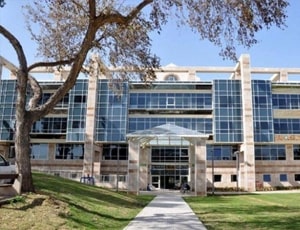
Kaplan Medical Centre located in Rehovot, Israel is accredited by JCI. Also listed below are some of the most prominent infrastructural details:
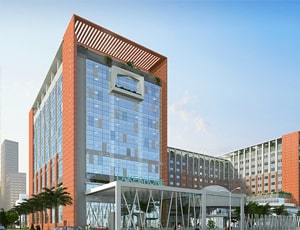
Types of Mastectomy in VPS Lakeshore Hospital and its associated cost
| Treatment Option | Approximate Cost Range (USD) | Approximate Cost Range (INR) |
|---|---|---|
| Mastectomy (Overall) | 3036 - 7625 | 248919 - 622397 |
| Total Mastectomy | 2536 - 6074 | 207477 - 501591 |
| Modified Radical Mastectomy | 3050 - 6609 | 249703 - 539260 |
| Radical Mastectomy | 3560 - 7098 | 292351 - 584453 |
| Double Mastectomy | 4057 - 8100 | 333331 - 663677 |
| Skin-Sparing Mastectomy | 3048 - 6097 | 249405 - 500142 |
| Nipple-Sparing Mastectomy | 3556 - 6625 | 292332 - 540341 |
| Subcutaneous Mastectomy | 2537 - 5071 | 208187 - 415010 |
| Prophylactic Mastectomy | 3563 - 7115 | 290881 - 583779 |
DOCTORS IN 13 SPECIALITIES
FACILITIES & AMENITIES

Types of Mastectomy in Acibadem Maslak Hospital and its associated cost
| Treatment Option | Approximate Cost Range (USD) | Approximate Cost Range (TRY) |
|---|---|---|
| Mastectomy (Overall) | 3905 - 9659 | 121058 - 291259 |
| Total Mastectomy | 3320 - 7843 | 102421 - 242005 |
| Modified Radical Mastectomy | 3891 - 8621 | 116436 - 256539 |
| Radical Mastectomy | 4436 - 8892 | 136716 - 272729 |
| Double Mastectomy | 5035 - 9910 | 149456 - 309841 |
| Skin-Sparing Mastectomy | 3869 - 7846 | 119842 - 240989 |
| Nipple-Sparing Mastectomy | 4264 - 8593 | 128350 - 258388 |
| Subcutaneous Mastectomy | 3328 - 6795 | 100850 - 200894 |
| Prophylactic Mastectomy | 4364 - 9089 | 131131 - 274612 |
DOCTORS IN 10 SPECIALITIES
FACILITIES & AMENITIES
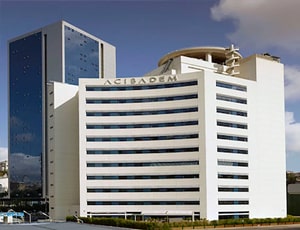
Types of Mastectomy in Acibadem Fulya Hospital and its associated cost
| Treatment Option | Approximate Cost Range (USD) | Approximate Cost Range (TRY) |
|---|---|---|
| Mastectomy (Overall) | 3938 - 9634 | 118722 - 291033 |
| Total Mastectomy | 3363 - 8044 | 99597 - 232787 |
| Modified Radical Mastectomy | 3968 - 8264 | 120007 - 257194 |
| Radical Mastectomy | 4410 - 8888 | 134035 - 265275 |
| Double Mastectomy | 5063 - 10080 | 154277 - 308007 |
| Skin-Sparing Mastectomy | 3966 - 7917 | 118805 - 239222 |
| Nipple-Sparing Mastectomy | 4198 - 8321 | 128953 - 255332 |
| Subcutaneous Mastectomy | 3414 - 6664 | 100629 - 201680 |
| Prophylactic Mastectomy | 4320 - 9107 | 130254 - 275815 |
DOCTORS IN 11 SPECIALITIES
FACILITIES & AMENITIES
Mastectomy refers to the partial or complete surgical removal of one or both the breasts. This surgery is most often indicated for breast cancer.
A lump in the breast or armpits is one of the earliest signs of breast cancer. It can cause a change in the shape, size, or color of the breast or nipple. Nipple tenderness, inward folding of the nipple, discharge from the nipple, and orange peel appearance of the skin of the breast are the other signs of breast cancer. Patients who observe any of the above-mentioned signs must see their physician immediately.
Your physician may recommend you to undergo a partial or full mastectomy in the following conditions:
Additionally, if you have a family history of breast cancer or deleterious mutation of BRCA 1 and BRCA 2 genes, you are advised preventive mastectomy.
Three types of mastectomy surgeries can be performed in the patients, depending on the extent of the tumor as determined by the CT scan and mammography reports.
This type of mastectomy is carried out when the tumor is small and the surrounding lymph nodes are not infiltrated by the tumor cells. When mastectomy is conducted on both the breast, it is known as double mastectomy. This is also used in cases of invasive ductal carcinoma.
Step 1: Surgical incision at the site of tumor in the breast or breasts or invasive ductal carcinoma (in the case of double mastectomy)
Step 2: Retraction of the intervening tissue
Step 3: Resection of a tumor along with some normal tissue
Step 4: Establishment of drainage
Step 5: Surgical closure of the wound
This procedure is performed when the tumor is large and involves a few lymph nodes.
Step 1: Surgical incision across the nipple
Step 2: Retraction of the intervening tissue
Step 3: Resection of the tumor along with some normal tissue
Step 4: Resection of lymph nodes into which the tumor cells drain (sentinel biopsy)
Step 5: Establishment of drainage
Step 6: Surgical closure of the wound
This procedure is carried out when the tumor is extensive and involves all the lymph nodes and muscles of the breast.
Step 1: Surgical incision across the breast
Step 2: Retraction of the breast tissue
Step 3: Resection of a tumor, muscle and connective tissue of the breast
Step 4: Resection of all the lymph nodes of that side of the body
Step 5: Establishment of drainage
Step 6: Surgical closure of the wound
Apart from the above three procedures, there is lumpectomy (removal of just the lump along with some of the surrounding tissue) and subcutaneous mastectomy (nipple and skin tissue are not removed).
As the anesthetic effect starts to wear off, you may start experiencing pain. Analgesics are administered through an intravenous line for the first two days after the anesthetic effect wears-off. In the case of a simple breast cancer mastectomy, the drainage tubes are removed in the immediate post-operative period. They are retained for two days if you undergo a radical mastectomy. Any signs of inflammation or redness should be immediately reported, as it may indicate infection.
Initially, clear fluid diet is given during the recovery period and then this is slowly progressed to solid food. You should take sponge baths until the incision heals to prevent the occurrence of an infection. You may keep the arms elevated to prevent the accumulation of fluid in the breast cavity. The hospital stay for radical mastectomy is one to two days. The complete recovery may take up to six weeks.
Ask your healthcare adviser for the best multiple options and choose the one that meets your expectations
The cost of Mastectomy in South Korea starts from $9500. In South Korea, Mastectomy is conducted across many multispecialty hospitals.
Different hospitals have different pricing policy when it comes to the cost of Mastectomy in South Korea. The Mastectomy package cost usually includes all the expenses related to pre and post surgery expenses of the patient. The treatment cost usually includes the expenses related to hospitalization, surgery, nursing, medicines, and anesthesia. Extended hospital stay, complications after the surgery or new diagnosis may affect the overall cost of Mastectomy in South Korea.
Mastectomy in South Korea is offered by multiple hospitals across the country. The top hospitals for Mastectomy in South Korea include the following:
Upon discharge from the hospital after Mastectomy in South Korea, the patients are advised to stay for about 21 days for recovery. This time frame is important to ensure that the surgery was successful and the patient is fit to fly back.
There are certain expenses additional to the Mastectomy cost that the patient may have to pay for. These are the chanrges for daily meals and hotel stay outside the hospital. The per day extra expenses in South Korea per person are about USD 50 per person.
Mastectomy in South Korea is offered in almost all metropolitan cities, including the following:
After the Mastectomy takes place, the average duration of stay at the hospital is about 3 days. This phase is important to ensure that the patient is recovering well and is clinically stable. During this time, several tests are performed before the patient is deemed suitable for discharge.
There are more than 1 hospitals that offer Mastectomy in South Korea. These clinics have propoer infrastructure as well as offer good quality of services when it comes to Mastectomy These hospitals comply with all the rules and regulations as dictated by the regulatory bodies and medical association in South Korea
Some of the best doctors for Mastectomy in South Korea are: